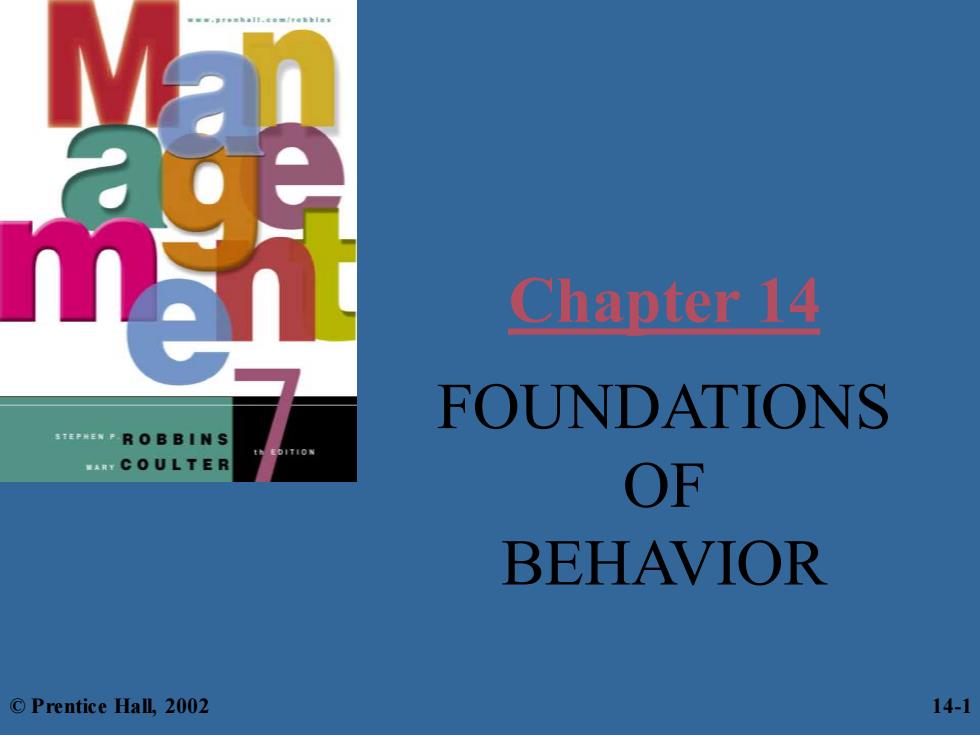
Chapter 14 FOUNDATIONS DROB BI NS ACOULTER OF BEHAVIOR ©Prentice Hall,2002 14-1
Chapter 14 FOUNDATIONS OF BEHAVIOR © Prentice Hall, 2002 14-1
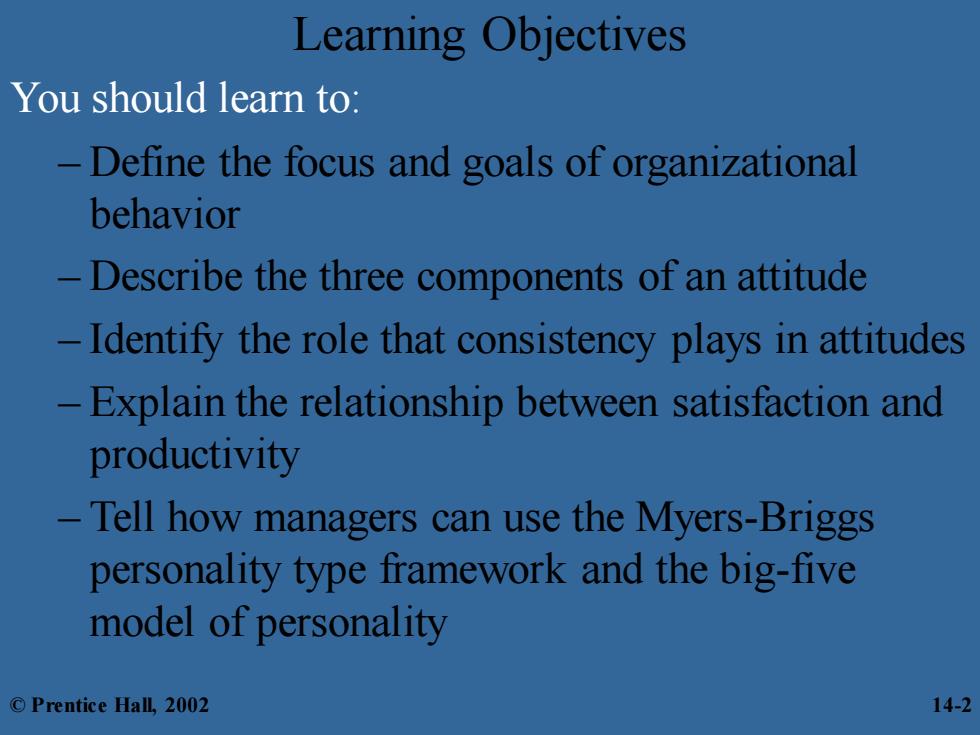
Learning Objectives You should learn to: Define the focus and goals of organizational behavior Describe the three components of an attitude -Identify the role that consistency plays in attitudes Explain the relationship between satisfaction and productivity Tell how managers can use the Myers-Briggs personality type framework and the big-five model of personality ©Prentice Hall,2002 14-2
Learning Objectives You should learn to: – Define the focus and goals of organizational behavior – Describe the three components of an attitude – Identify the role that consistency plays in attitudes – Explain the relationship between satisfaction and productivity – Tell how managers can use the Myers-Briggs personality type framework and the big-five model of personality © Prentice Hall, 2002 14-2
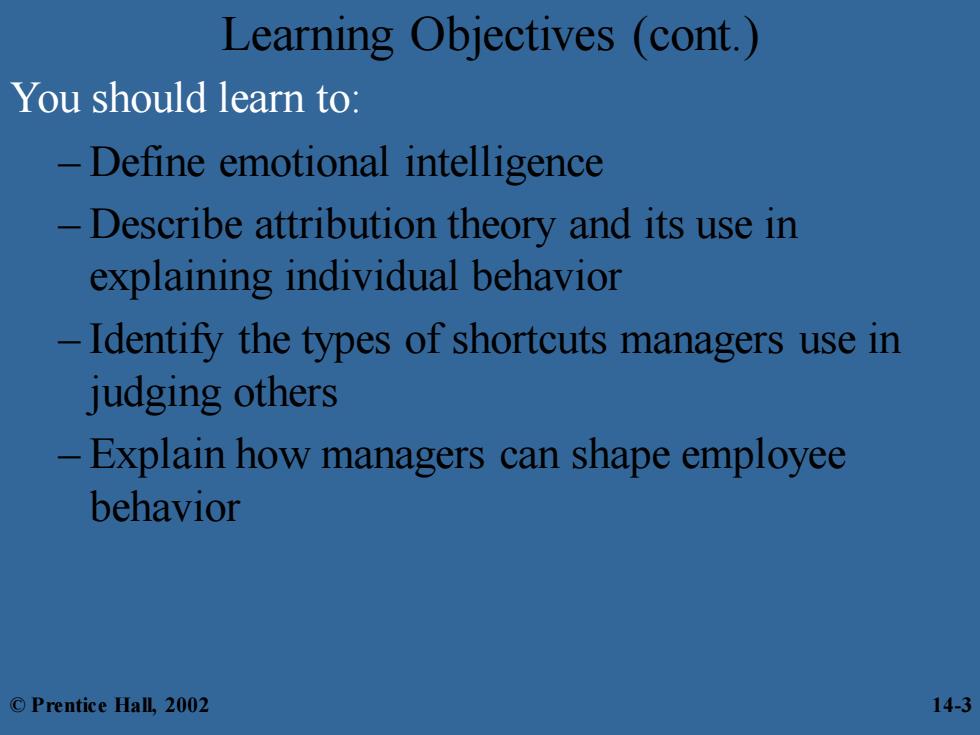
Learning Objectives (cont. You should learn to: Define emotional intelligence Describe attribution theory and its use in explaining individual behavior Identify the types of shortcuts managers use in judging others Explain how managers can shape employee behavior ©Prentice Hall,2002 14-3
Learning Objectives (cont.) You should learn to: – Define emotional intelligence – Describe attribution theory and its use in explaining individual behavior – Identify the types of shortcuts managers use in judging others – Explain how managers can shape employee behavior © Prentice Hall, 2002 14-3
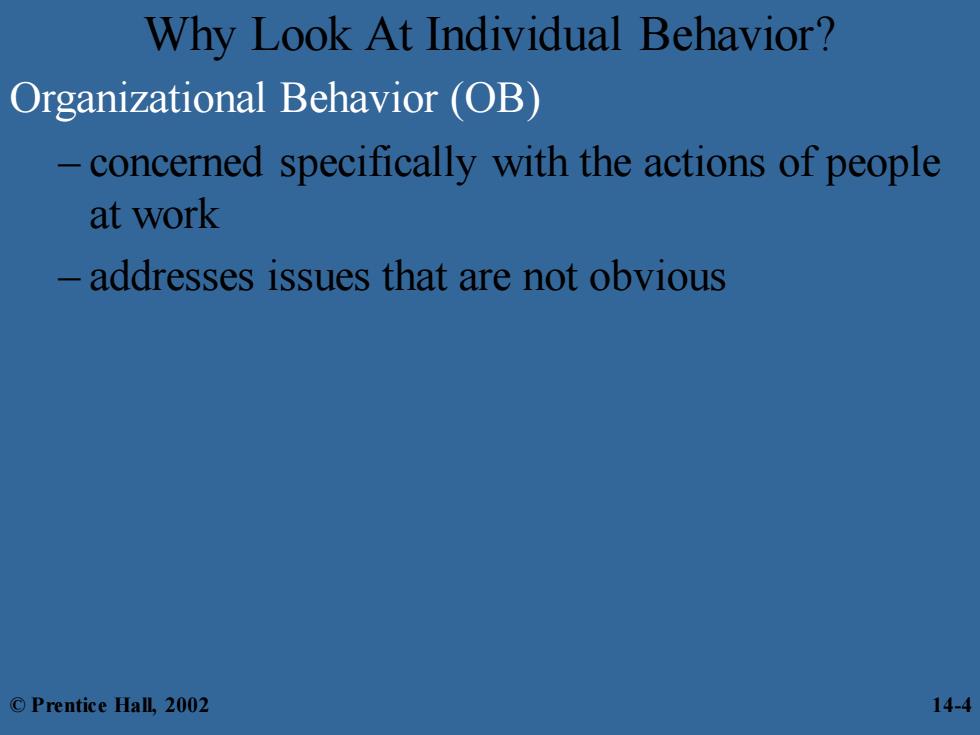
Why Look At Individual Behavior? Organizational Behavior (OB) -concerned specifically with the actions of people at work addresses issues that are not obvious ©Prentice Hall,2002 14-4
Why Look At Individual Behavior? Organizational Behavior (OB) – concerned specifically with the actions of people at work – addresses issues that are not obvious © Prentice Hall, 2002 14-4
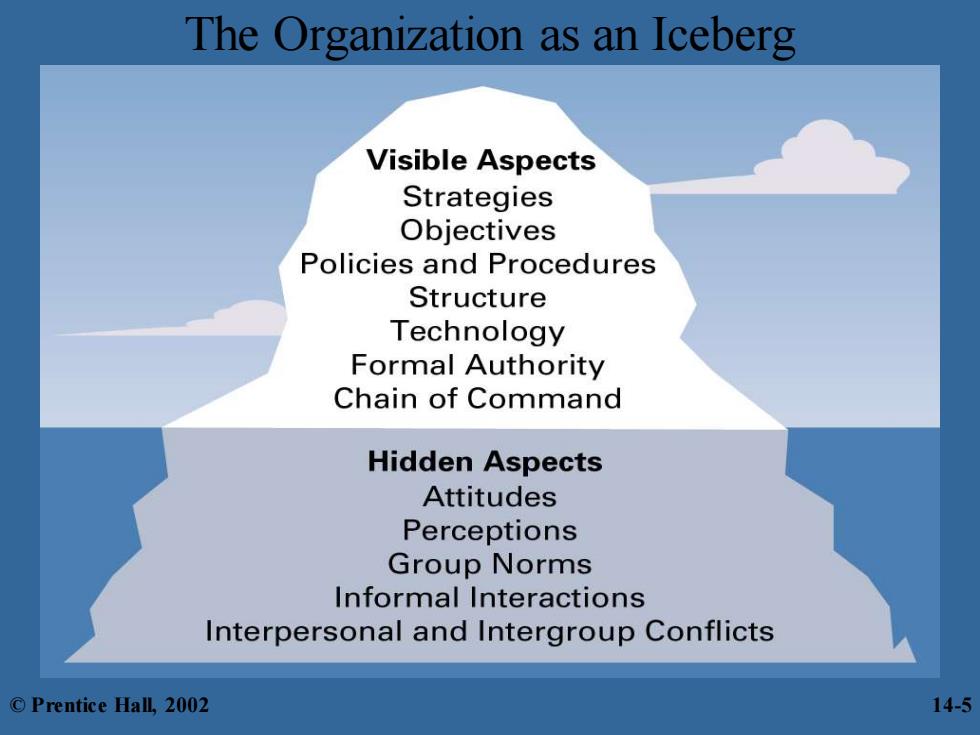
The Organization as an Iceberg Visible Aspects Strategies Objectives Policies and Procedures Structure Technology Formal Authority Chain of Command Hidden Aspects Attitudes Perceptions Group Norms Informal Interactions Interpersonal and Intergroup Conflicts ©Prentice Hall,2002 14-5
The Organization as an Iceberg © Prentice Hall, 2002 14-5
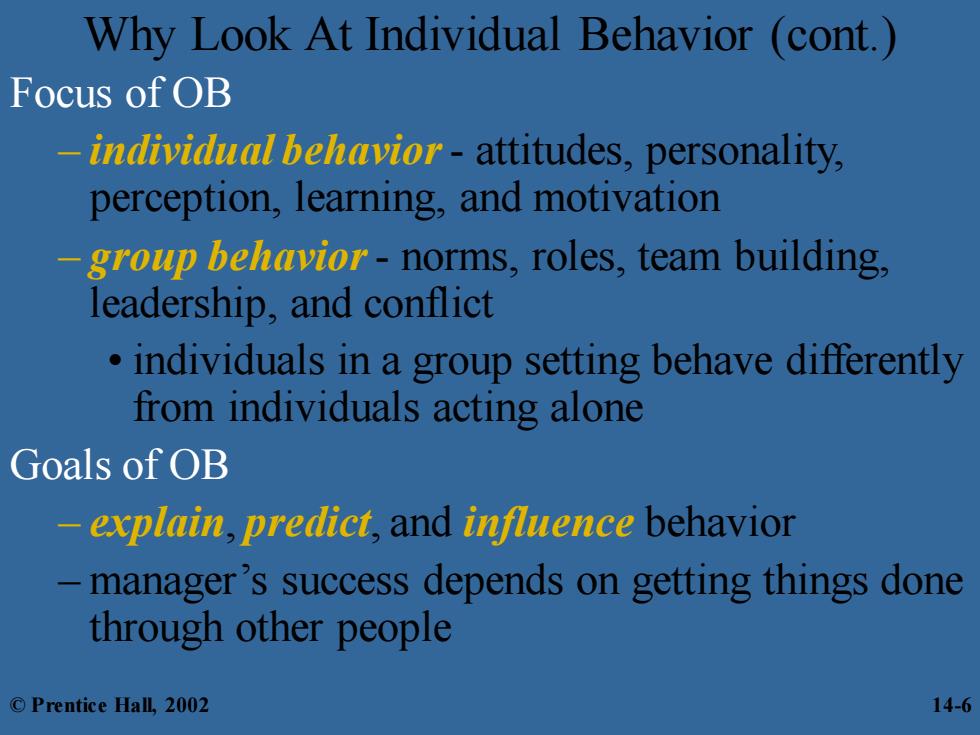
Why Look At Individual Behavior (cont. Focus of OB individal behavior-attitudes,personality, -i perception,learning,and motivation group belavior-norms,roles,team building, leadership,and conflict individuals in a group setting behave differently from individuals acting alone Goals of OB explain,predict,and influence behavior manager's success depends on getting things done through other people ©Prentice Hall,2002 14-6
Why Look At Individual Behavior (cont.) Focus of OB – individual behavior - attitudes, personality, perception, learning, and motivation – group behavior - norms, roles, team building, leadership, and conflict • individuals in a group setting behave differently from individuals acting alone Goals of OB – explain, predict, and influence behavior – manager’s success depends on getting things done through other people © Prentice Hall, 2002 14-6
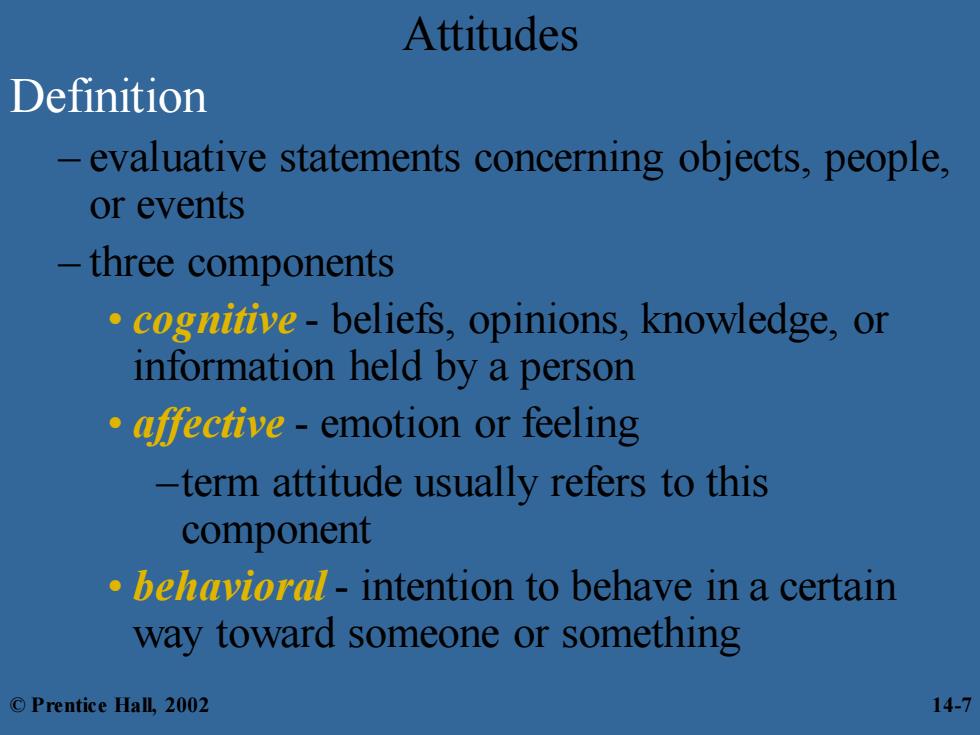
Attitudes Definition -evaluative statements concerning objects,people or events three components cogitive-beliefs,opinions,knowledge,or information held by a person ective-emotion or feeling -term attitude usually refers to this component belbavioral-intention to behave in a certain way toward someone or something ©Prentice Hall,2002 14-7
Attitudes Definition – evaluative statements concerning objects, people, or events – three components • cognitive - beliefs, opinions, knowledge, or information held by a person • affective - emotion or feeling –term attitude usually refers to this component • behavioral - intention to behave in a certain way toward someone or something © Prentice Hall, 2002 14-7
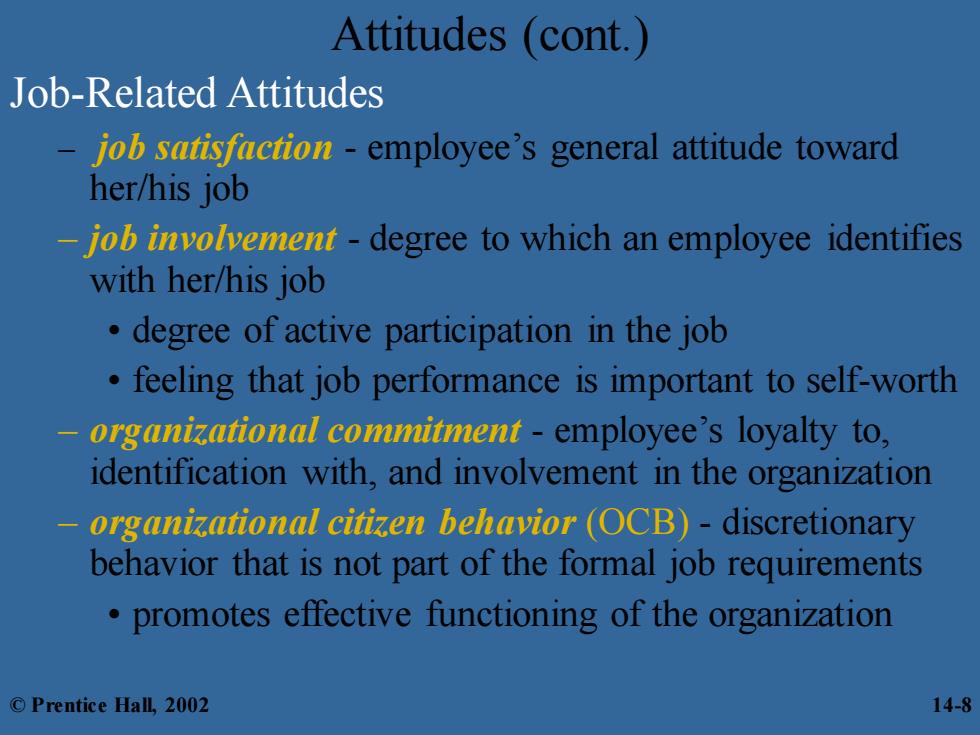
Attitudes (cont. Job-Related Attitudes job saisaction-employee's general attitude toward her/his job -job involverent -degree to which an employee identifies with her/his job degree of active participation in the job feeling that job performance is important to self-worth -organizational commitment -employee's loyalty to, identification with,and involvement in the organization organizational citizen behavior (OCB)-discretionary behavior that is not part of the formal job requirements promotes effective functioning of the organization ©Prentice Hall,2002 14-8
Attitudes (cont.) Job-Related Attitudes – job satisfaction - employee’s general attitude toward her/his job – job involvement - degree to which an employee identifies with her/his job • degree of active participation in the job • feeling that job performance is important to self-worth – organizational commitment - employee’s loyalty to, identification with, and involvement in the organization – organizational citizen behavior (OCB) - discretionary behavior that is not part of the formal job requirements • promotes effective functioning of the organization © Prentice Hall, 2002 14-8

Attitudes (cont. Attitudes and Consistency people seek consistency: among their attitudes between their attitudes and behavior inconsistency gives rise to steps to achieve consistency alter attitudes or behavior develop rationalization for the inconsistency ©Prentice Hall,2002 14-9
Attitudes (cont.) Attitudes and Consistency – people seek consistency: • among their attitudes • between their attitudes and behavior – inconsistency gives rise to steps to achieve consistency • alter attitudes or behavior • develop rationalization for the inconsistency © Prentice Hall, 2002 14-9
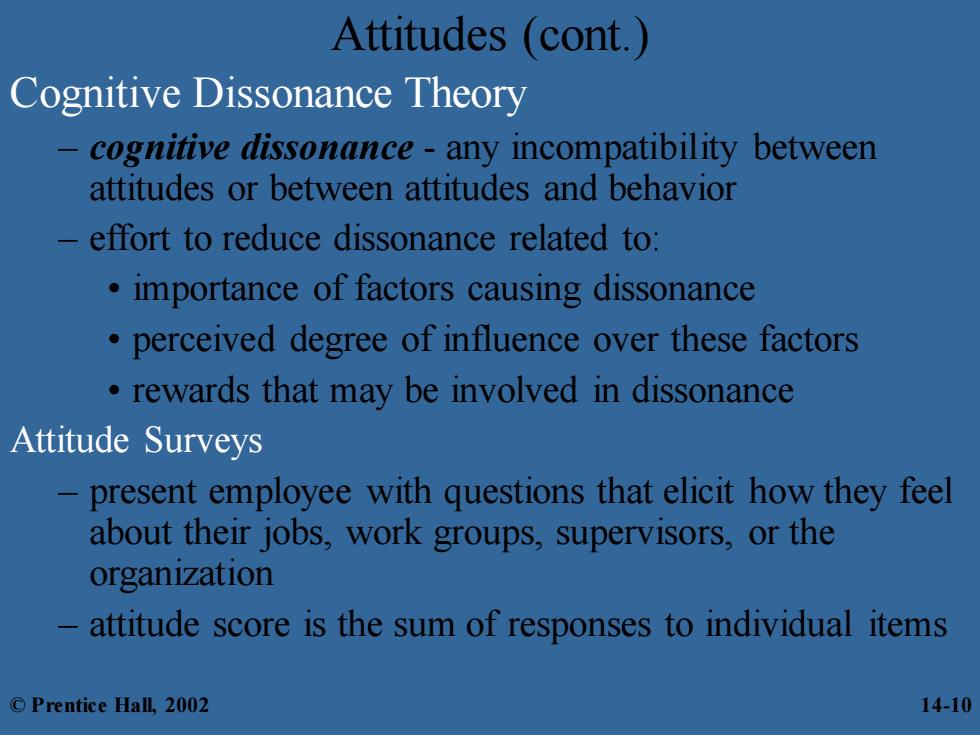
Attitudes (cont. Cognitive Dissonance Theory cognitive dissonance-any incompatibility between attitudes or between attitudes and behavior effort to reduce dissonance related to: importance of factors causing dissonance perceived degree of influence over these factors rewards that may be involved in dissonance Attitude Surveys -present employee with questions that elicit how they feel about their jobs,work groups,supervisors,or the organization attitude score is the sum of responses to individual items ©Prentice Hall,2002 14-10
Cognitive Dissonance Theory – cognitive dissonance - any incompatibility between attitudes or between attitudes and behavior – effort to reduce dissonance related to: • importance of factors causing dissonance • perceived degree of influence over these factors • rewards that may be involved in dissonance Attitude Surveys – present employee with questions that elicit how they feel about their jobs, work groups, supervisors, or the organization – attitude score is the sum of responses to individual items Attitudes (cont.) © Prentice Hall, 2002 14-10